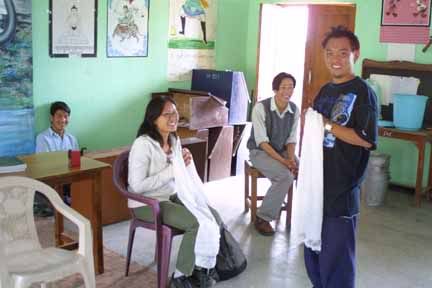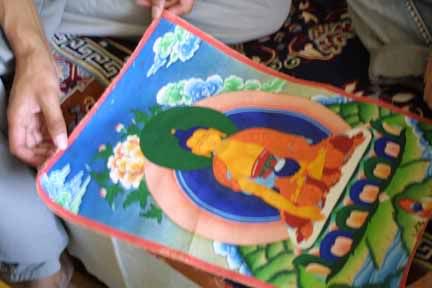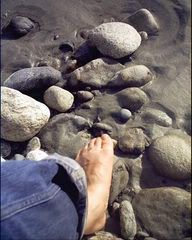Art sharing
The other day I went back to TTS to talk a little with the Thangka painting class, as I was donating some art supplies to them. The students were so enthusiastic. I'm going back on Monday to do a (very quick) demonstration on watercolors and oils. It will be interesting what we can cover in just 2 hours, but it will be fun. Most of the students are pretty talented and have a good eye.
Meanwhile, I decided after few visits and pondering how to study thangka that I'm not going study it for now. Thangka painting is amazingly intricate and structured and it has its specific history and purpose. It is meant to pay homage to gods and goddesss, Buddhas and Bodhisattvas in the Buddhist pantheon. My dharma knowledge is not great enough to practice this art, nor am I at the moment disciplined enough to spend hours a day for several months on a single piece. Yes, that's how long it takes to complete these thangkas, which is why they're so expensive. They're also so precious because they crush their own pigments from precious stones and minerals. The paint-making process involves boiling those pigments for hours. That's really good because the painting then retains its color brilliance for a long time. (These should not be confused with the great number of fake thangkas on the market -- ones that are painted in acrylics and watercolor, for example). Anyway, hopefully those interested in buying the thangkas will understand their value, not from the price, but from the materials, time and energy, and dharmic value.
Having been more interested lately in how the process of art-making informs the art ideas and the art product, I've decided it's not for me now. My art is still about patching together stuff from recycled materials, from image and text. But I may be able to endeavor in learning thangkas later on, when my dharma is stronger. We'll see.
Anyway, here are pix from TTS:

The class monitor is offering me a kata

A work in progress by the thangka teacher
Meanwhile, I decided after few visits and pondering how to study thangka that I'm not going study it for now. Thangka painting is amazingly intricate and structured and it has its specific history and purpose. It is meant to pay homage to gods and goddesss, Buddhas and Bodhisattvas in the Buddhist pantheon. My dharma knowledge is not great enough to practice this art, nor am I at the moment disciplined enough to spend hours a day for several months on a single piece. Yes, that's how long it takes to complete these thangkas, which is why they're so expensive. They're also so precious because they crush their own pigments from precious stones and minerals. The paint-making process involves boiling those pigments for hours. That's really good because the painting then retains its color brilliance for a long time. (These should not be confused with the great number of fake thangkas on the market -- ones that are painted in acrylics and watercolor, for example). Anyway, hopefully those interested in buying the thangkas will understand their value, not from the price, but from the materials, time and energy, and dharmic value.
Having been more interested lately in how the process of art-making informs the art ideas and the art product, I've decided it's not for me now. My art is still about patching together stuff from recycled materials, from image and text. But I may be able to endeavor in learning thangkas later on, when my dharma is stronger. We'll see.
Anyway, here are pix from TTS:

The class monitor is offering me a kata

A work in progress by the thangka teacher


0 Comments:
Post a Comment
<< Home